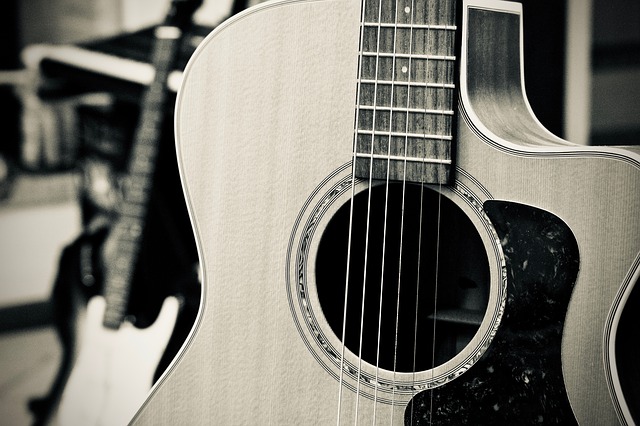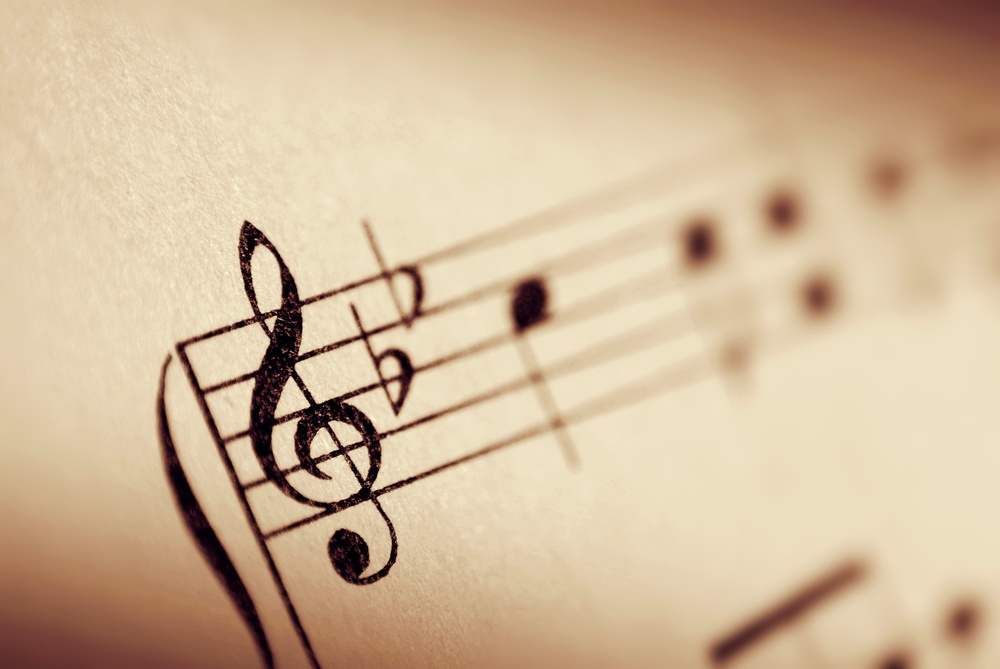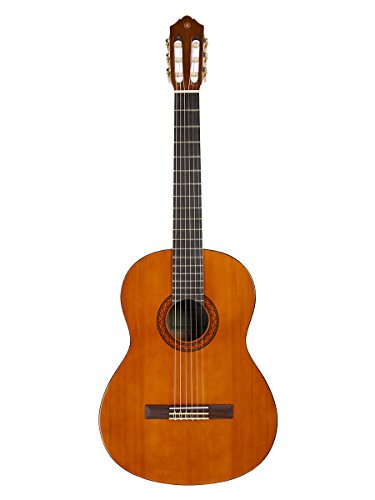It’s a great day to learn
So today is the day! The day you’ve decided to begin learning how to play the guitar. I can remember the first time I picked up my first 6 string. It was an incredible experience.
It’s a great day to rock, and we salute you!
If you’ve the passion, drive, and willingness to put in the time to practice, I don’t want there to be any roadblocks in your path.
Here at Musilesson, we’ve put together a list of things you’re going to need get the ball rolling. These are general guidelines and your situation may vary.
A guitar
This is a no brainer. Playing the guitar requires you to have a…guitar. But what am I looking for? What type of guitar should I get? How much money should I spend? All great questions. Let’s investigate further.
What am I looking for?
The most basic requirements for a guitar you’re looking to buy is going to be a truss rod, a straight neck, leveled frets (if it’s used), a strong and un-warped body, frets that don’t stick out the sides of the neck and cut your hands, and tuners that stay in tune.
Most everything else is negotiable (not that some other things aren’t essential). Additionally, many things on the guitar can be upgraded.
Next, you have to decide whether or not you’re going to first play the electric or the acoustic guitar.
Electric vs. Acoustic
There’s a debate on which is best to start with. I am in the camp that says starting on the acoustic is great for building finger strength and coordination. This is because acoustic guitars have naturally larger string gauges and higher string tension.
The result is the hand working harder. Working harder means getting stronger faster. Strong hands and coordinated fingers are what you need to get better at the guitar.
However, there is another school of thought that posits that it is better to start learning on an electric specifically because it will be easier to make your notes and strum your chords. Logically, that line of thinking checks out.
At the end of the day, I think it depends on what type of music you are most excited to learn. If heavy metal turns you on, pick up an electric. If bluegrass tickles your sonic taste buds, go acoustic. To a certain degree, it’s that simple.
However, remember that if you decide to play electric, you will need extra things like an amplifier and guitar cables. If you think the electric guitar might be the best option for you, check out our article on how to choose the best beginner electric guitar!
Steel-string Acoustic vs. Classical nylon string acoustic
Both of these types of guitars produce sound via acoustic chambers, bracing, and sound holes. However, there are physical differences.
Classical guitars generally have wider necks, thicker necks, wider nuts, and nylon strings. Additionally, many classical guitarists prefer tying off the their own strings at the bridge, though there are ball-end nylon strings in production to make things easier.
Nylons produce a very distinct mellow tone that lends itself clearly to classical and flamenco style guitar playing. I very much enjoy it.
However, these types of guitars are often played finger-style. In other words, most nylon-string acoustic guitar players don’t use picks.
Nylon strings don’t bend like steel strings and therefore, vibrato is approached differently and it’s very easy to press down on the strings due to the low string tension.
Finally, classical guitars are not quite as loud as steel-string acoustic guitars, but they are more than capable of filling a room.
Steel-string acoustic guitars have considerably higher string tension. This lends certain models to produce large amounts of volume. However, steel-string acoustics can be uncomfortable for beginners.
I mitigate this effect by advising people to use smaller, light acoustic guitar strings and making sure they have a good setup with low fret buzz and low action.

Once your fingers have developed callouses and your hands are strong, you can up the gauge.
Steel-string acoustic guitar strings have ball-ends and often times use pins to hold the strings at the bridge. Sometimes this requires a few extra minutes of prep work.
Find a guitar with a stop-tail style bridge that holds the ball-ends for quick string changes.
Steel-string acoustic guitars feel like a heavier gauge version of electric guitars. For this reason, they’re an easier transition for beginners to go from acoustic to electric.
The main difference is that you will not be able to bend the strings on an acoustic as easily as you will on a steel-string electric guitar.
To sum it up, if you’re interested in flat-picking, strumming, or getting a twangier sound out of your guitar, a steel-string acoustic might be right for you.
If you want the purest of sonic sounds that hearkens back to a pure, unblemished acoustic era where fingers ruled guitar playing with styles such as Flamenco and Classical, the nylon string classical guitar might be right for you.
Flat-picking or finger-style?
The next step is to decide whether or not you want to play with or without a pick. As an instructor, I generally start my students flat-picking because it’s easier on the right hand while learning the mechanics of the left-hand (fretting hand).
Additionally, a lot of the modern songs that my students like to hear and play are easily arranged into strummed songs. This is another reason I have my students begin learning with a flat-pick.
However, if you desire to play classical, flamenco, or in the vein of Chet Atkins, you will usually begin learning finger-style either with or without a thumb pick.
Other finger-style genres can include folk, country, bluegrass and jazz. It’s important to know your goals because you can also combine flat-picking and finger-style into something called “hybrid picking” or “chicken pickin’” if applied to country.
This style is where you use a flat pick but also use the bottom three fingers of your picking hand to pluck the strings.
Remember that there are many different variables and many musicians develop their own personal style, so use these guidelines to decide where you want to go.
Curriculum: Should I read notes or play by ear?

There have been a myriad of musicians throughout history who have spent their whole lives playing masterfully without being formally trained.
The question arises: should I read notes or play by ear? In a very short fashion, I will unpack and respond to this issue. We will discuss this topic more in another article.
What people are really asking is, “should I learn from a set method or should I just be self-taught?” The answer is two-fold.
You can absolutely learn by ear and be self-taught. Today this often turns into reading tablature guitar notation. However, you absolutely need a path.
The shortest distance between two points is a straight line. Unfortunately with being self-taught and learning by ear, we often find ourselves wandering around trying to decide what to learn next.
So my answer is this: you don’t have to be able to read notes to be a great musician, but you must find a path that teaches you solid instrument technique and teaches you how to play the music that gets you excited.

Whether that be by sheet music, tablature, or instructional videos and friends showing you songs, always strive to make improvements as a musician.
However, I also advise people that learning proper technique on your instrument requires you to play songs and skill builders that simply aren’t fun or are boring.
Don’t let that deter you. Your playing will benefit from it and you’ll be happy you dug in and learned the best way to play your instrument.
To sum this all up, note reading comes inherently packaged with a path to growth and knowledge of your instrument as most methods will include this in the learning process.
However, should you decide not to read notes, there are a number of ways to grow as an instrumentalist and a musician, you simply need to make sure you’re learning all the techniques the guitar has to offer.
This won’t happen all at once, but that’s why I keep mentioning that you need a “path to growth”.
Accessories
There’s a ton of items on this list. Bear with me here because I’m going to make a run down the list and give you some things to think about on what you need to acquire and what you can do without.
Guitar picks
If you’re flat picking or playing with a thumb pick, it’s important to start out with a few extras. You’re going to wear through picks relatively quickly, depending on their thickness.
Thumb picks are used for finger-style adaptations while flat picks are great for strumming and hybrid-style guitar playing.
For flat picks, I suggest starting with a “medium” gauge pick in the vein of a Fender 351 or 451 shape (somewhere between .60 and .90 for specificity).
These picks have some width to them and have a semi-pointed tip. This allows for better grip on the pick and a little forgiveness if our picking technique isn’t perfect just yet.
Once you’ve played and learned more about yourself as a musician, you can further define what types of picks you like.
Guitar case
Some guitars come with cases while others don’t. I recommend everyone have a case of some type for their guitar.
As for myself, I have hard cases for every guitar I travel with. In other words, if it leaves my house, it’s sitting inside either wood or hard plastic to protect it.
However, there are very protective soft cases, or gig bags on the market.
At the very least, make sure that you have a soft case or gig bag with which to carry your guitar to and from lessons or performances.
If you don’t, you run the risk of dropping it, bumping it, nicking it, or having it caught outside in the elements. All of these things can cause substantial damage to your instrument.
Finally, make sure that the case you are purchasing fits the type of guitar you have.
For example, if you have an electric guitar, be sure to get an electric guitar gig bag or hard shell case.
Also, remember that there are different acoustic and electric guitar body styles that require different hard shell and soft shell cases.
Music Stand
If you’re going to be reading tablature or sheet music, you’re going to need a stand. Not want, need. I used to place my music in my case to read it.
I’d wake up the next day with a crick in my neck. Even worse was placing it on my bed and bending over to make it work.
Music stands are a boon to any sheet music or tab reading musician.
You don’t need to break the bank on a stand, just make sure your music has plenty of room to sit on the shelf of the stand, there’s plenty of back rest for the book to lay on on the stand, and make sure the stand is sturdy and won’t tip over easily.
Guitar strap
Classical guitar players rarely use straps, opting most often to play seated with a stool under their fretting hand leg.
If you’re a steel-string acoustic player or an electric guitar player, you may benefit from a strap. Electric guitar players in particular often play standing up.
Acoustic guitar players will enjoy straps for many of the same reasons but also when you’re playing out at the campfire and you don’t want your guitar falling off of you onto the ground.
Straps provide a lot of support and I usually appreciate their presence.
Peg winder
An often overlooked accessory, the peg winder makes short work of string changes because it helps you wind up the string with much greater speed. It also makes the process easy on your hand.
Trust me, by the time you get to the sixth string change, your hand is going to be fatigued. Tip: Look for the guitar peg winders that are 2 or 3 in 1 where they include clippers and other accessories in the peg winder.
String clippers
If you didn’t get a peg winder that has one built in, be sure to get string clippers.
These can be as simple as something purchased from a hardware store or some made specifically for guitar. Either works as I have been effective at using both.
Tip: When cutting the strings, make sure to cut them relatively close to the tuning peg so that there is less of a chance of you or someone else getting pricked or stuck by the freshly cut strings.
Trust me, it hurts. Some friends of mine even file down and dull the ends of the freshly cut strings to avoid this.
Guitar cleaner, polish and fretboard oil
We want to make sure our guitar stays in top working order. Part of that is keeping it clean.
If we let dust, grime and sweat build up, it can affect the finish of your guitar and it’s neck. Some people want this effect.
Personally, I want my instruments to stay as new as possible for as long as possible.
Either way, keeping your guitar playing fast on the neck and the frets requires you to clean the neck and often apply oil to the fretboard.
Tip: Fretboard oil is separate from cleaner and polish. Even if you want that “worn in” look, I advise cleaning and oiling the fretboard to keep the guitar playing like new.
Cleaning cloth
To piggy back off the last accessory, we want to get ourselves a nice, soft cloth with which to clean our guitars.
Often times, there are packages you can buy with guitar cleaner, polish and fretboard oil that also come with a cleaning cloth.
If that’s not the case and you buy things separately, many manufacturers sell these cloths a la carte style.
Basically, make sure the cloth doesn’t scratch the finish, unless you desire that “worn in” look.
This means no paper towels, and no hard cloth as these can produce swirls and even scratches in the finish.
Extra strings
I always advise people to buy extra strings, no matter the style of guitar you are playing.
Always go with Murphy’s Law on this one. Electric guitar strings break relatively often depending on what type of music I’m playing. I have at least 5 sets with me at all times.
Acoustic guitar strings can fair better, depending on how heavy you strum and how often you play. If your practice and performance schedule is as busy as mine, then you’ll be buying these in bulk like me.
Most 3 packs of strings are pretty reasonably priced so they’re accessible in semi-bulk form. In this way, you can make sure that you’re never stuck unable to play your guitar because your strings broke.
An amplifier
If you decided to go the electric guitar route, you’re going to want an amplifier. If you’re an acoustic-electric guitar player and you want more volume, you will likewise need an amplifier.
This topic can get very long and we will discuss this at length in another article. However, here’s a few tips on being a beginner and buying a guitar amplifier.
Amplifier search: Find your fun
If you’re a beginner electric player, buy a versatile electric guitar amplifier that covers a lot of ground.
However, make sure it has a setting for your favorite type of music as well. Which genre do you like to play? If it’s blues, find an amp that can play blues. Maybe you like jazz. Buy an amp that allows you to play jazz.
Do you enjoy heavy metal? Find an amp with a Metallica setting, or high gain.
If you’re an acoustic-electric guitar player, a simple acoustic amp with a few effects should get you started.
These amps tend to be a bit less complex and as a beginner, that’s a good thing. Try not to overwhelm yourself.
You’ll grow, find more preferences, and discover your niche the more you play. On day 1, it’s important to simply facilitate your learning.
Remember that you will need 1/4 inch guitar cables to plug your guitar into your amplifier and play.
Budget
I include budget in a lot of articles because this theme needs to be reiterated: don’t break the bank.
If money is no object, disregard this message. However, if you are on a budget, stick to the budget.
You can get creative within your price range, deciding which components get more money, but try not to exceed your limits unless your money situation changes.
Our goal is to see you thrive on your instrument.
Putting yourself into a situation where you are strapped for cash due to how much you spent on your guitar and accessories may find you choosing between lunch or your instrument, or short on rent next month.
Both of those situations will lead to problems including resentment of your instrument or maybe even selling your hard earned guitar to pay for necessary expenses. We want to avoid this at all costs.
Musilesson.com
Yep! We encourage you to read all of our guides and check back here regularly for helpful tips and educational material.
We hope we can facilitate your growth and joy learning your chosen guitar.
Final thoughts
There are plenty of great options to be found in each of these categories. We’ve covered some of these topics in other articles so take a stroll through our Instruments and Guitar categories here to gain some added wisdom and perspective.
Ultimately, if you’re learning, having fun, and maintaining your passion for the guitar, you’re going to be moving in the right direction.
Always make sure you’ve got the next step in your curriculum planned out and keep practicing. Have a great day!
















